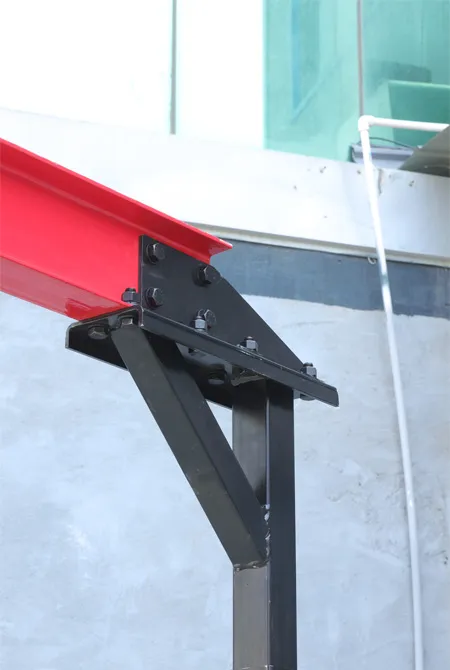Design and Functionality of a Double Girder Bridge Crane for Industrial Applications
The Double Girder Bridge Crane An Essential Tool in Heavy Lifting
In the world of heavy lifting and material handling, the double girder bridge crane stands out as one of the most efficient and versatile pieces of equipment available. This sophisticated machine is designed to move heavy loads across a wide span with precision and reliability, making it invaluable in various industrial settings, from manufacturing plants to construction sites and warehouses.
Understanding the Structure
A double girder bridge crane consists of two parallel girders that support the entire system, offering greater strength and stability compared to its single girder counterpart. These girders are typically made from high-grade steel, ensuring they can handle substantial weights without bending or warping. The crane mechanism itself is mounted on these girders, which allows for smooth lateral movement across the span of the crane.
The main components of a double girder bridge crane include the bridge, hoist, end trucks, and control systems. The hoist, which is the mechanism that lifts and lowers loads, operates vertically while traveling horizontally along the girders. This design maximizes headroom and allows for higher lifting capabilities, which is crucial in environments where space is a premium.
Advantages of Double Girder Bridge Cranes
When compared to single girder cranes, double girder bridge cranes offer several advantages. Firstly, they have higher lifting capacities, which makes them suitable for moving heavier loads that are common in industries such as steel production, shipbuilding, and construction. Their robust construction also translates to longer service life and reduced maintenance costs over time.
double girder bridge crane

Another significant advantage is their ability to span large distances without the need for additional support structures. This feature is particularly beneficial in large warehouses or open manufacturing spaces, where it’s essential that the crane can cover a broad area without hindrance. Furthermore, double girder cranes allow for the installation of various hoist models, including electric, pneumatic, or hydraulic options, enhancing their versatility.
Applications in Various Industries
The utility of double girder bridge cranes makes them indispensable across numerous sectors. In the manufacturing industry, they are often used for assembling parts, lifting heavy components, and transporting finished goods within a facility. Similarly, in construction, these cranes are crucial for lifting steel beams and precast concrete sections, contributing significantly to the efficiency of construction processes.
Moreover, double girder bridge cranes are frequently employed in warehouses for loading and unloading trucks, managing inventory, and moving bulk materials. Their ability to quickly and safely transport heavy loads not only enhances productivity but also reduces the risk of workplace accidents.
Conclusion
In conclusion, the double girder bridge crane is an essential tool in modern material handling and industrial operations. Its robust design, high lifting capacities, and versatility make it a preferred choice for a variety of applications. As industries continue to evolve and the demand for efficient material handling solutions grows, the importance of double girder bridge cranes will undoubtedly remain significant. Investing in this type of crane not only boosts efficiency but also ensures superior safety and reliability in lifting operations. For businesses looking to streamline their processes and improve their operational capabilities, the double girder bridge crane proves to be a worthy investment.
-
Unlock Seamless Relocation with Our Heavy Equipment Moving ExpertiseNewsJun.06,2025
-
Unleash Unrivaled Flexibility with Our Adjustable Gantry CraneNewsJun.06,2025
-
Unleash Heavy-Duty Efficiency with Our Industrial Gantry Crane SolutionsNewsJun.06,2025
-
Revolutionize Steel Handling with Our Magnetic Lifter RangeNewsJun.06,2025
-
Master Equipment Mobility with Premium Machinery Mover SolutionsNewsJun.06,2025
-
Elevate Your Material Handling with Magnetic Lifter TechnologyNewsJun.06,2025
-
YS Permanent Lifting Magnets: The Smarter Way to Handle SteelNewsMay.22,2025
